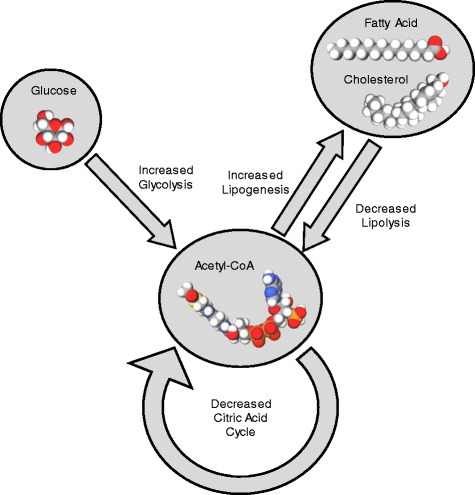Fig. 2.

A general diagram showing the physiological basis responsible for the NPC1 gene-nutrient interaction that promotes weight gain and susceptibility to obesity. Mouse model tissues (liver and adipose) and fibroblasts grown in culture indicate (i) increased glycolysis (oxidation of glucose and conversion to pyruvate in the cytoplasm), (ii) decreased oxidative metabolism (conversion of pyruvate to acetyl-CoA and condensation with oxaloacetate to produce citrate in the mitochondria), (iii) increased lipogenesis pathway (transport of citrate from the mitochondria and conversion to acetyl-CoA and malonyl-CoA for lipid (cholesterol and fatty acid) synthesis in the cytoplasm), and (iv) decreased lipolysis pathway (transport of fatty acid from the cytoplasm and conversion of fatty acid to acetyl-CoA in the mitochondria)
